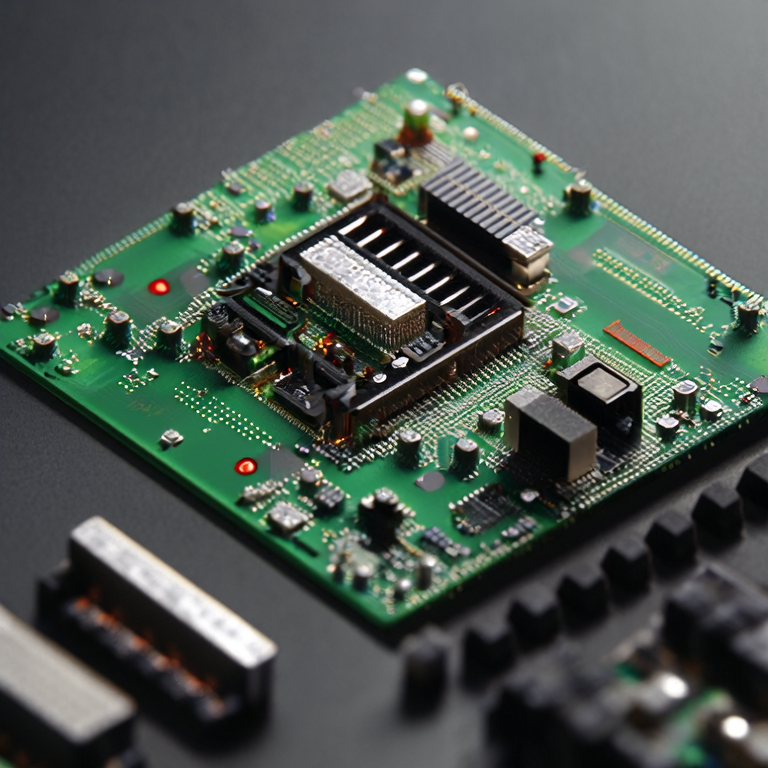Table of Contents
- Introduction
- Summary Answer
- 1. Key Benefits of FPGAs
- 2. Flexibility in Design
- Conclusion
- FAQ
Introduction
Engineers face many choices when designing new products. One popular choice is Field Programmable Gate Arrays (FPGAs). These versatile devices can be customized for various applications. They help speed up prototyping, reduce development time, and lower costs. As an interwiser-global.com/">FPGA Boards manufacturer, we understand that design flexibility and quick iterations are crucial for engineers. Utilizing advanced technology like FPGAs allows engineers to innovate and meet market demands efficiently. 
Summary Answer
**Engineers are choosing FPGAs for prototyping and product design due to their flexibility, reprogrammability, and speed. They are ideal for quick iterations and allow for rapid adjustments during the design process.**
1. Key Benefits of FPGAs
FPGAs offer many advantages that make them appealing to engineers. Here are some notable points:
- **Reconfigurability**: FPGAs can be reprogrammed multiple times. This unique feature enables engineers to test different functions and optimize designs easily.
Data Support
A recent study revealed that 70% of product design teams prefer FPGAs for their reconfigurability compared to traditional chips.
- **Speed of Development**: The rapid deployment associated with FPGAs means shorter time-to-market for products. Engineers can make quick changes without used time-consuming hardware alterations.
Case Study
A tech company recently transitioned its design process to FPGAs, resulting in a 40% reduction in prototype development time.
- **Cost-Effective**: Using FPGAs can lower production costs. Engineers can build prototypes without creating custom hardware for each iteration, saving time and money.
2. Flexibility in Design
FPGAs provide unmatched flexibility. This is crucial for today’s fast-paced development cycles. Here’s why:
- **Customization**: Engineers can customize designs to fit specific project requirements. This flexibility allows for innovation without being limited to a fixed hardware setup.
Flowchart of Design Customization Process
1. Identify Design Requirements
2. Choose FPGA Model
3. Develop Software Code
4. Configure FPGA
5. Test and Iterate
- **Scalability**: FPGAs are scalable solutions. As projects grow in complexity, engineers can upgrade their FPGAs without redesigning the entire system.
Comparison Table of FPGA Vs. ASIC
| Feature |
FPGA |
ASIC |
| Reprogrammability |
Yes |
No |
| Cost for Low Volumes |
Lower |
Higher |
| Time to Market |
Faster |
Slower |
Conclusion
In conclusion, engineers are increasingly choosing FPGAs for their prototyping and product design needs. With benefits like reconfigurability, speed of development, and cost savings, FPGAs offer great flexibility. As an FPGA boards manufacturer, we value their role in innovative engineering solutions. Embracing this technology can significantly enhance productivity and creativity in engineering projects.
FAQ
1. **What are FPGAs?**
FPGAs are integrated circuits that can be programmed to perform specific tasks after manufacturing.
2. **Why are FPGAs better than ASICs for prototyping?**
FPGAs are reprogrammable, which allows engineers to make changes quickly. ASICs are fixed and expensive to modify.
3. **How do FPGAs reduce costs?**
They eliminate the need for multiple hardware designs, lowering production and development costs.
4. **Are FPGAs suitable for all types of projects?**
While ideal for many applications, FPGAs may not be the best choice for very high-volume production due to cost and complexity.
5. **Can FPGAs be used in embedded systems?**
Yes, FPGAs can be integrated into embedded systems for specific functionalities and performance enhancements.